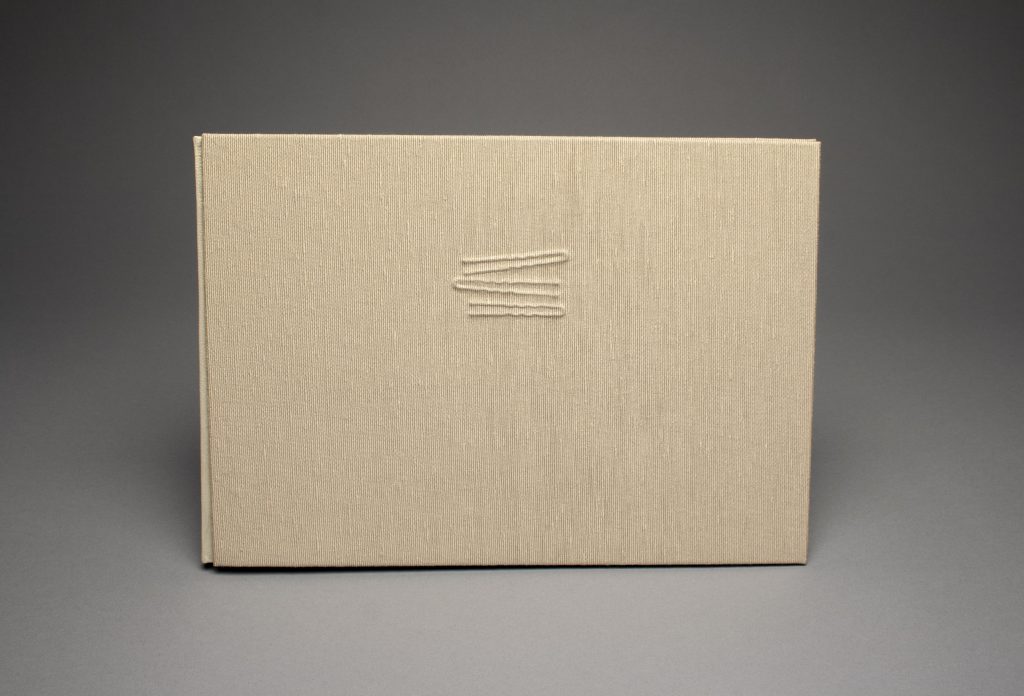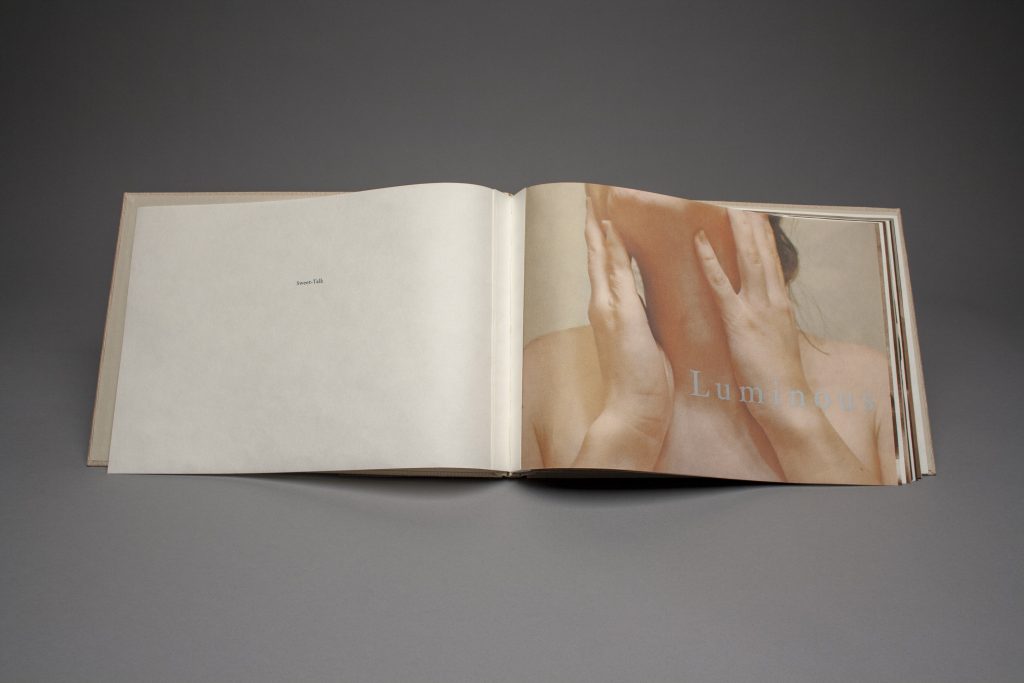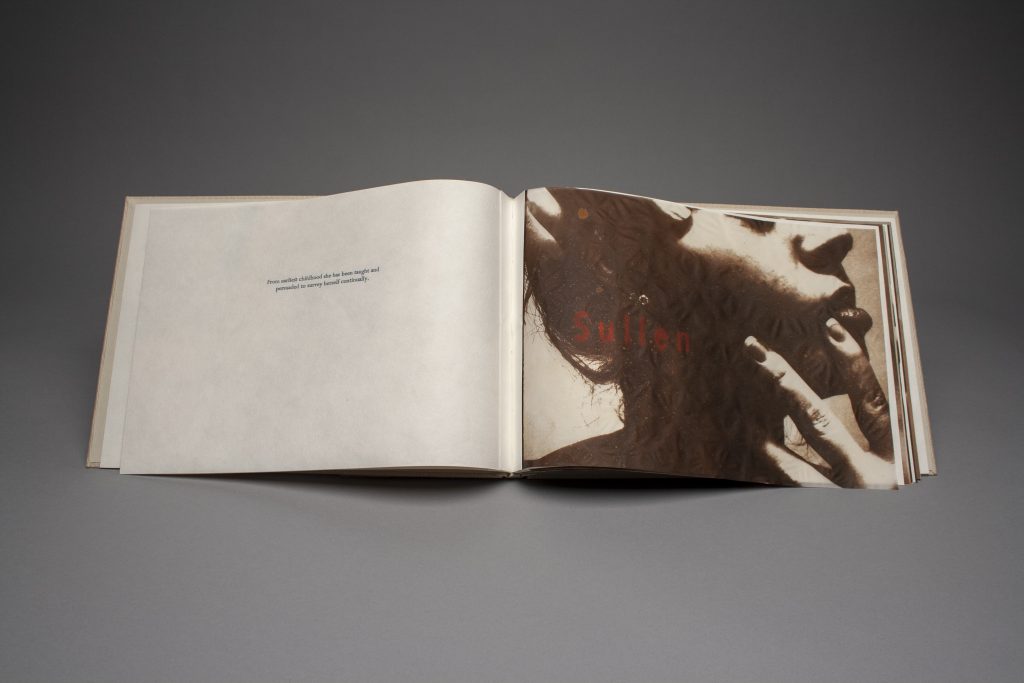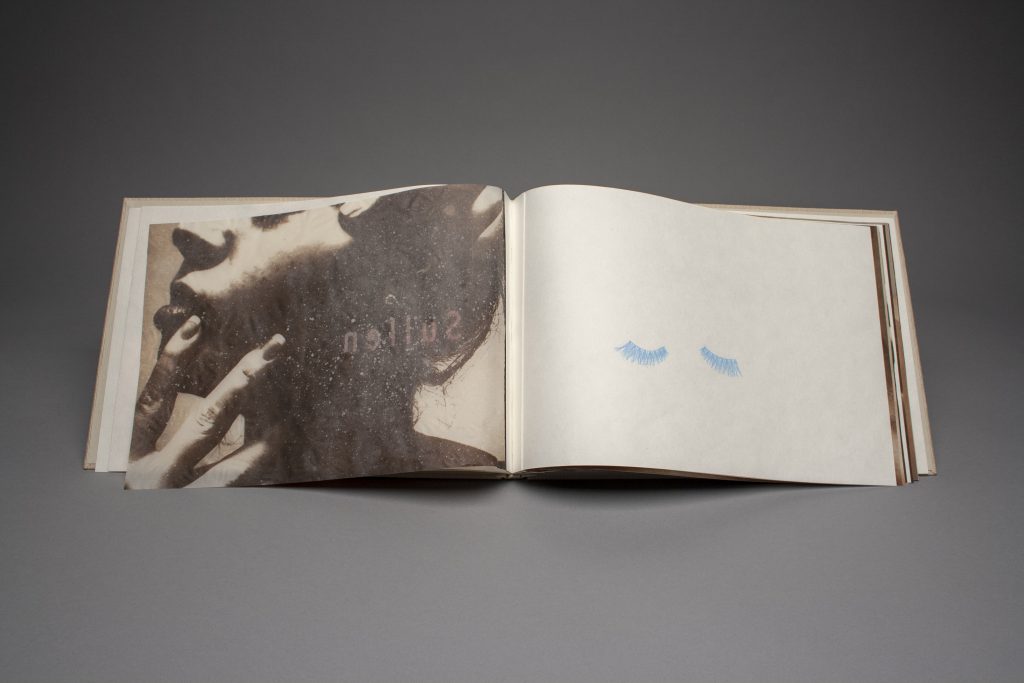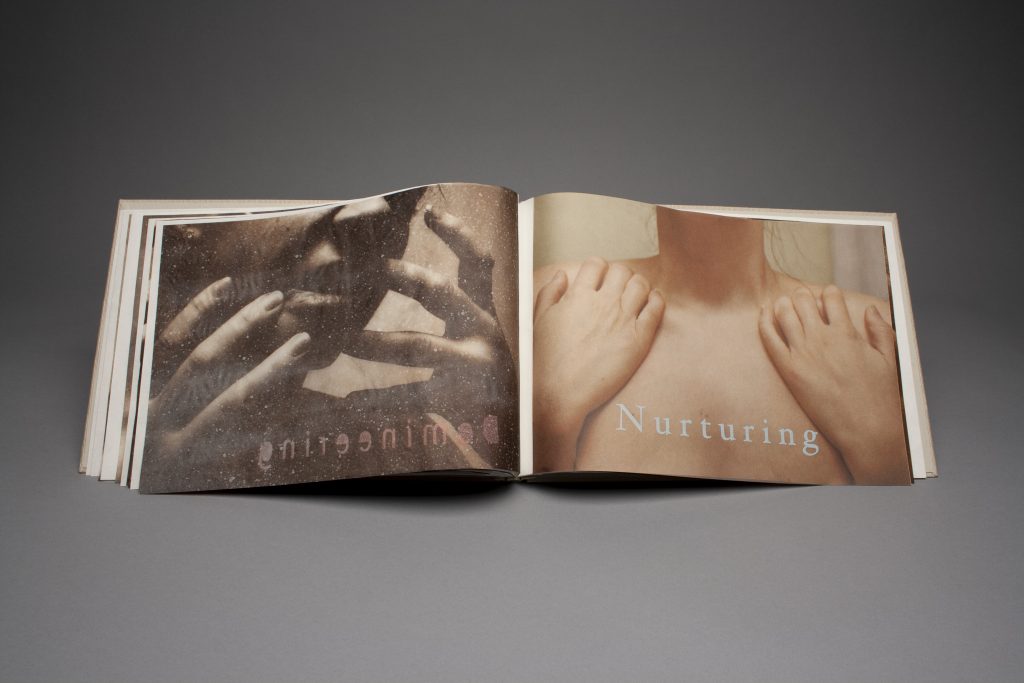Lizzy Arden
La Mesa, California
lizzyarden.com
Sweet-Talk
2019
inkjet printing, screen printing, Vandyke brown prints on pulp-painted abaca, monotypes, and letterpress printing
11 x 1 x 9″
Artist Statement
Women coming of age in the early twenty-first century advocate for themselves in areas of inequality that the civil rights movements of 60s and 70s did not fully achieve. In particular, my work directly engages with the problem’s women face with respect to body image and beauty standards. As a visual artist, I feel compelled to make work about these persistent issues and the challenges that have resulted from them. Specifically, my work explores some of the psychological issues that affect women’s self-images and personal relationships, as well as the consequences women face when deviating from perceived societal norms.
I combine text and visual images that relate to these struggles, focusing, in particular, on my own individual experiences with and perspectives on these matters. I self-consciously combine media as well as elements of text to critique gendered prejudices related to the body for my prints and artist books. I move freely between non-silver processes, such as Vandyke brown, and other techniques such as papermaking, printmaking, and letterpress printed elements. I often introduce new methods and mediums, working across artistic disciplines and in layers, analogous to the stratification of emotions that run deep within us. By exposing and covering, excavating and burying through the layers of my work, I explore my own vulnerabilities as an index of larger, universal insecurities plaguing all women. I likewise consider how emotions intermix with other memories and feelings to create something unique and irrational, a concept I aim to expose in my artwork.
In my artist book Sweet-Talk, it focuses on the objectification of women by women. Sweet-Talk, discusses the idea that not only do men objectify women, but that women are taught to objectify themselves and are continuing the cycle. The book uses an excerpt from John Berger’s, Ways of Seeing, as the main text of the book.
It is important to note that this was written by a man in 1972. Although my book is about contemporary women, I feel that his essay on the female nude is still very relevant and needs to be part of the feminist conversation. He argues that in Western art and then present-day media, women are shown and treated as objects and that the gaze is for the pleasure of a male. He argues that not only do men do this, but that women are taught to view themselves in this manner and that they are subconsciously always aware of the viewer. Sweet-Talk asserts the idea that, as women, many of us still struggle to alter this way of thought of objectifying ourselves.
In Sweet-Talk, I broke up the text through a series of photographs and prints that switch back and forth between bright posed colored photographs on soft Japanese Mulberry paper, and somber monochromatic photos on rigid transparent abaca paper. Each photo is accompanied by a larger word that is used to describe the female such as “luminous,” “mesmeric,” “domineering,” “sullen,” and “noxious.” These words are directed at females either as desires, fears, or common labels. This book shows the split between the two selves of a women, exposing a picture-perfect performative side as well as a vulnerable, dark side of women that no one usually sees. This book puts the reader in the surveyor’s position, seeing all perspectives of a woman, as an object and as a subject, highlighting how a woman may act differently for others, how she wants to be seen, how she views herself in private, how she can be viewed in a positive way or negative way, and how she is aware of all of these perspectives, at all times.


